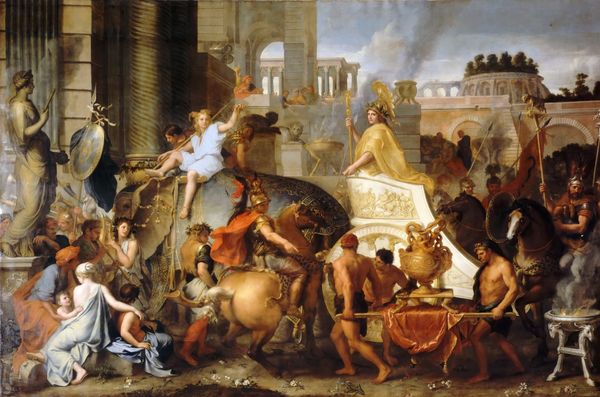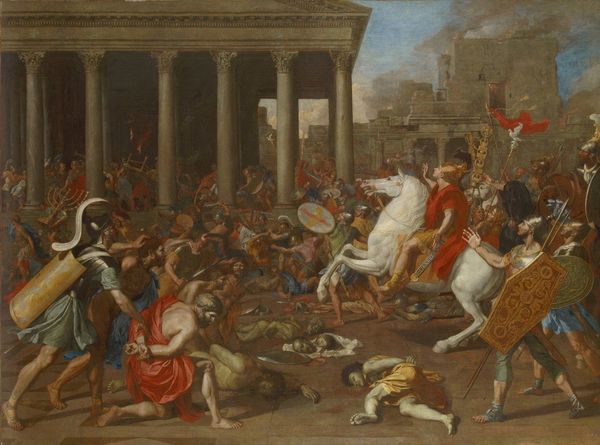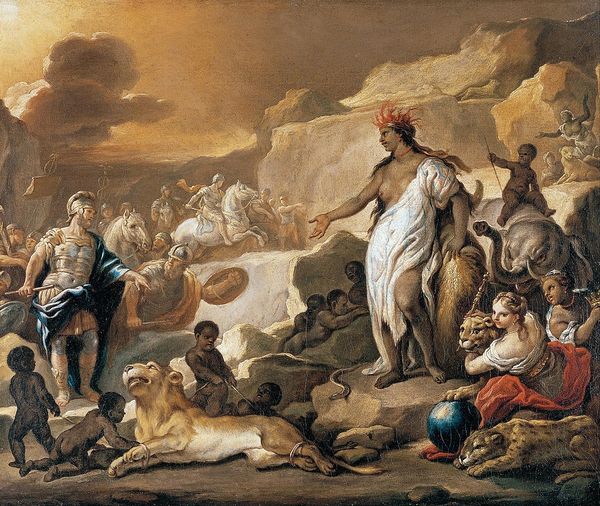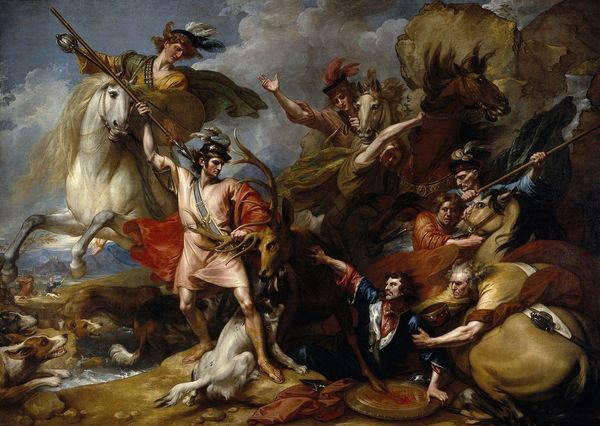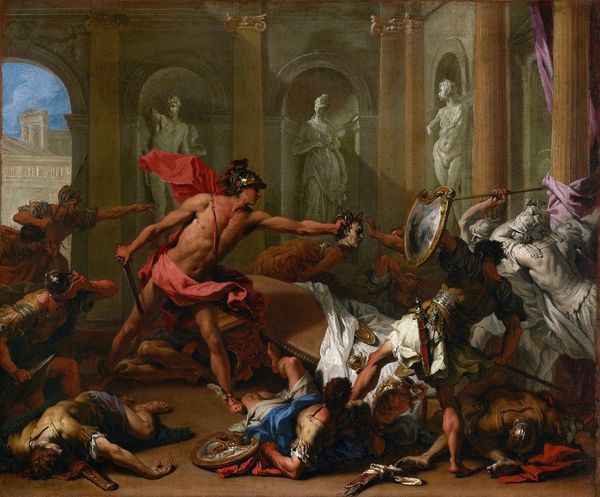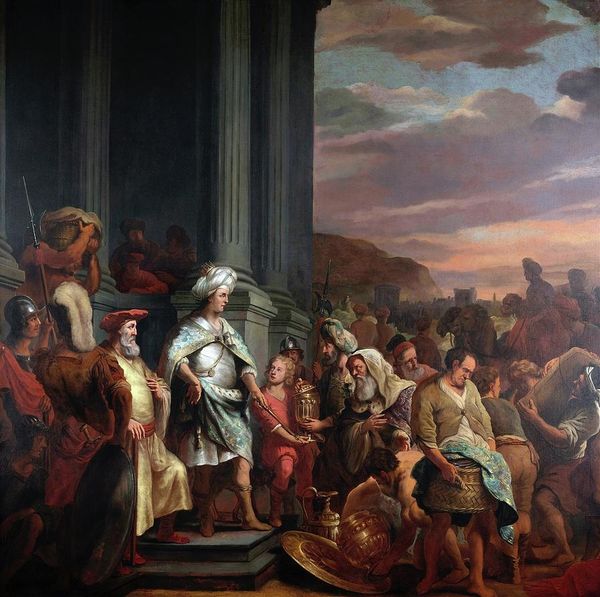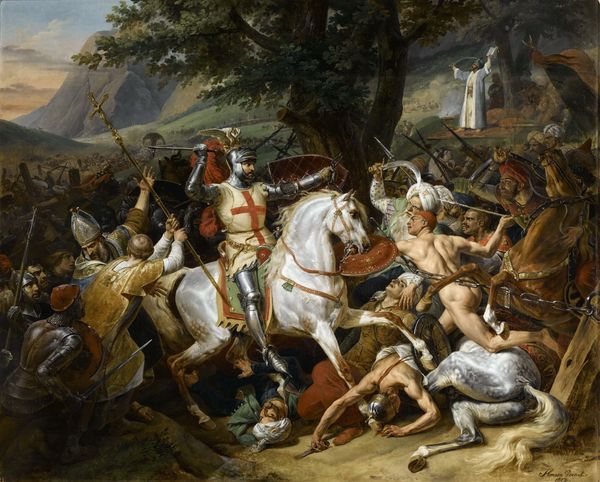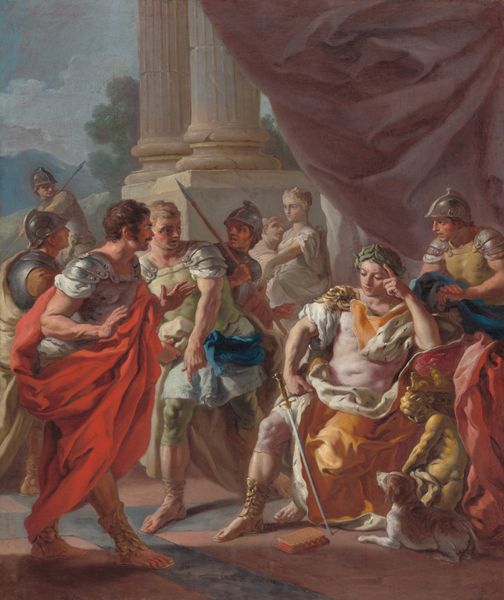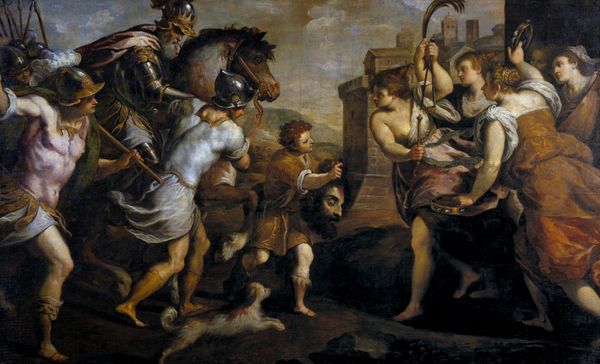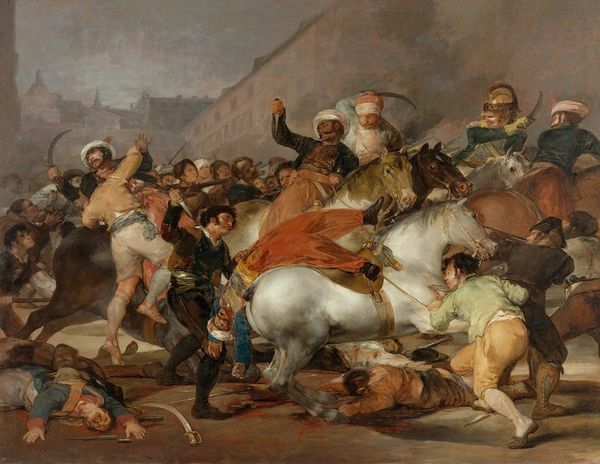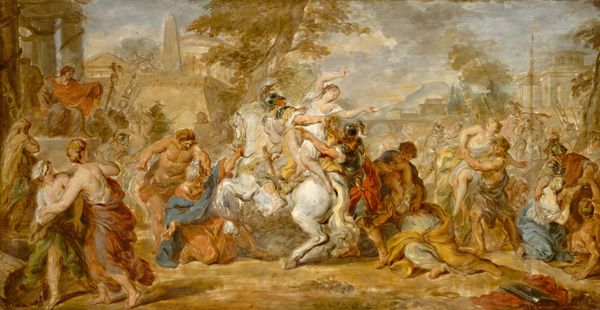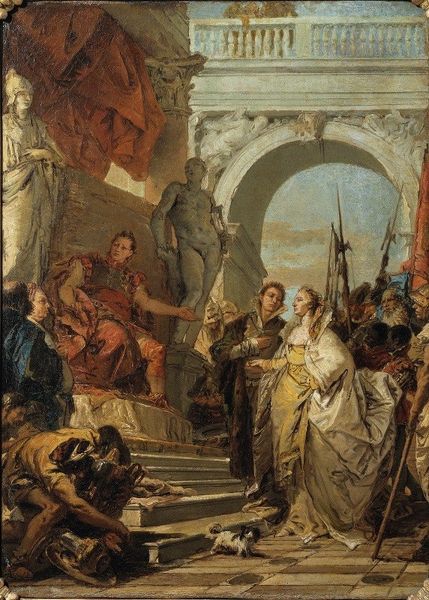
oil-paint
#
baroque
#
oil-paint
#
figuration
#
oil painting
#
history-painting
Copyright: Public domain
Ferdinand Bol’s "Consul Titus Manlius Torquatus Orders the Beheading of His Son" was painted with oils on canvas, a common practice at the time for creating large, narrative scenes. But don't let the traditional materials fool you. The making of this painting isn't just about artistic skill; it's deeply intertwined with social and political power. Consider the scale and detail: these required significant time and labor, reflecting the patronage system where wealthy elites commissioned artists like Bol to create works that reinforced their status. The use of costly pigments, ground by apprentices, and the sheer size of the canvas, speaks to a well-funded workshop. Bol was trained in Rembrandt’s workshop, and the drama and depth of the canvas is a reflection of a society grappling with order and power. The choice of this violent story underscores the values placed on discipline and authority, which are directly connected to the social hierarchies of the 17th century. So, when you look at this painting, remember it's not just art, it is also a product of its time, reflecting labor, resources, and the complex relationship between art and power.
Comments
No comments
Be the first to comment and join the conversation on the ultimate creative platform.
